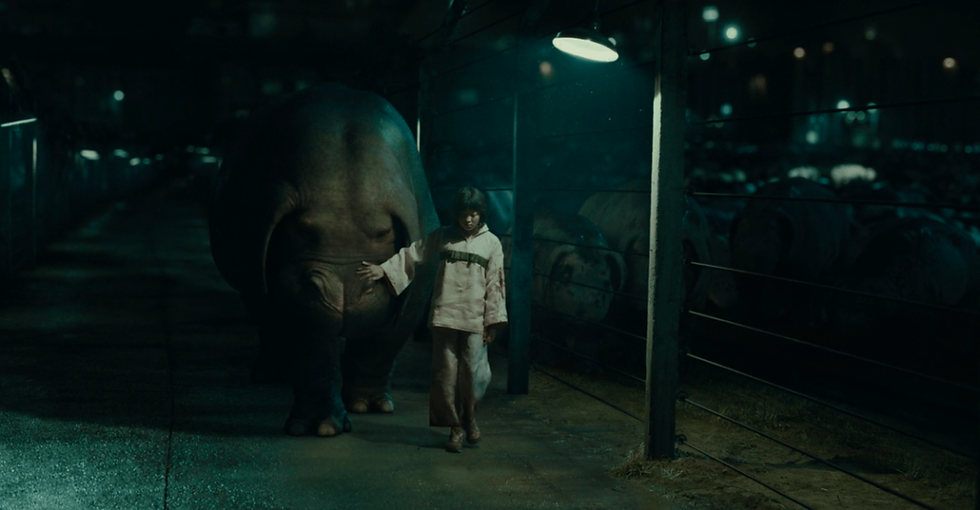Animal Cruelty in Film: Beyond the Human
In May 2023, the non-profit organisation People for the Ethical Treatment of Animals, known as PETA, honoured director James Gunn with the Not a Number Award for his movie Guardians of the Galaxy Vol. 3 for “exposing the evils of animal testing […and] reminding moviegoers that animals tortured in laboratories are sentient beings and not the numbers tattooed on them” (Harp, published in PETA.org, 2023). However, Gunn’s project is not by far the first production that denounces the reality of animal abuse, either in front or behind the camera. Certainly, animals have played relevant roles in cinematographic productions which are still remembered, such as the dog Beethoven and the whale from Free Willy. Some movies, nonetheless, conceal the real distress animals experience when overworked and experimented on. These may reveal how “obscure our knowledge of and relationship with animals” (O’Brien, 2023, p. 5) actually is.
Professor in Cinema and Media Studies at the University of Washington, José Alaniz, explains that “in film, humans and animals share a sort of levelling fictional space, through which they interact and influence each other, all the time regarded by a human audience which projects its symbolic presumptions onto the animals” (Alaniz, 2017, p. 361). In fact, the shared space between animals and humans is dominated by the latter’s domesticity since the former are displaced from their natural habitats, considering that their communication is non-linguistic and humans have industrial power. With the growth of the animal rights movement, there has been a “renewed interest by artists in the representation of animals […] from a fear that the human desire to differentiate ourselves from nature has led us down a dangerous path” (Watt, 2016, p. 121). Consequently, an entourage of films emerges in the allegation against animal cruelty and the hierarchy of animacy, which “remains key to how humans make sense of the world around them” (West, 2019, p. 239-40). Then, this article will focus on a number of movies that denounce animal abuse and the subsequent animal hierarchy in science, politics, entertainment, and the food industry, as well as the ethical implications beyond the film industry.

Comparable to Gunn’s production, the 2011 science fiction film Rise of the Planet of the Apes, a prequel to the original franchise Planet of the Apes, presents the cruelty to which primates are submitted for scientific purposes. Caesar’s mother and the other apes go from being captured to being injected with a serum and then slaughtered when the program fails to find a cure for Alzheimer’s. In effect, it “pushed the human spectator to recognize its own complicity in the oppression of nonhuman others, and in doing so opens up the possibility of a more ethical means of fighting engaging with animal suffering” (247). Furthermore, the chimeric space Caesar inhabits between ape and human after being raised by a human, both linguistically and physically, allows the human audience to empathise with their nonhuman counterparts.
Despite this empathy being produced by their resemblance to the human being, “Caesar’s acquisition and use of language, and his subsequent liminality, challenges the idea that language can ever fully sustain the rigid boundaries of the hierarchy of animacy, both because Caesar can command language and because language has no prescribed way of defining […] his position in that hierarchy” (243). Hence, his transcendence in human-dominated spaces demonstrates that animals, regardless of their species, are not at the disposal of humans to experiment on.

Culturally, animals have been used or presented as fairgrounds for human entertainment and as collateral damage for political goals. Circuses and zoos are among the institutions that have employed these practices. Walt Disney Studios, in particular, has extensively benefited from representing animals in their animated films, such as The Lion King, Brother Bear, and Bambi. Animal rights scholar Rebecca Rose Stanton explains in her book, The Disneyfication of Animals, that “the routine mistreatment animals frequently experience in reality, such as being caged, is rarely depicted by [Walt Disney Animations Studios]. When WDAS does depict harm towards animals, it is often romanticized, which is particularly evident with their depiction of animal farming and pet ownership” (Stanton, 2021, p. xiv).
Disney’s film Dumbo (1941) depicts the ridicule a young elephant suffers so as to entertain a human audience in a circus. Stanton, however, comments that the degree to which animal abuse is romanticised “distracts from underlying problems inherent to the circus environment, which deflects the misfortune and subsequent unhappiness that captive animals can experience” (135). In contrast, DreamWorks’ Spirit: Stallion of the Cimarron (2002) portrays the naturalised abuse inflicted on horses generally for warfare matters and political issues. The subjugation of horses to transport materials and humans is challenged by “incorporating the idea of free land and spectacular landscapes; of a wild, untamed spirit resisting the encroachments and suasions of civilization; and finally of lost freedom as civilization advances and the claims of responsible citizenry are made” (Mitchell, 2003, p. 498). Steven Spielberg’s War Horse would fall under the same characteristics.

Tragically, one form of animal abuse that is often overlooked by the film industry is the mistreatment of animals within the food industry. In 2017, Korean director Bong Joon-ho directed, wrote, and produced Okja, a film that sheds light on this issue. Nominated for several accolades, Okja “highlights both the violence enacted on sentient beings and the slow violence enacted on the environment” (Angierski, 2021, p. 221). The film particularly obliges the audience to confront the reality behind their meat consumption, including the preparation for the market, the forced reproduction, the conditions in which they are treated, and the horrendous slaughter that ensues from capitalist mass consumption.
Chiefly, Okja translates the real suffering of a life designed to be literally consumed, whose purpose is to satisfy and feed the crest of the animal hierarchy. Clearly, it might “press the spectator toward a recontextualized engagement with the sight of animal slaughter, and that cinema’s inherently intertextual way of watching may spur her to recognize that these images index beings, practices, and institutions that are intimately connected to her own lived reality” (O’Brien, 2023, p. 27). Therefore, audiences cannot deny their own contribution to animal cruelty, as alienated as it may seem.

Overall, this article has discussed four movies engaged with disclosing the scientific, political, cultural, and economic reasons to justify animal cruelty for human benefit. It has also identified the ethical implications of animal abuse, which underline the reconstruction of the animal hierarchy the human has provoked. Additionally, it has shown the social impact these representations might have on audiences ignorant of their own environment. The primary goal of this article was to make the reader aware of the uncountable cruelties animals are subjected to for human interests alone. Ultimately, it argues that animals, as sentient beings, should not be socially, scientifically, or politically used or exploited, recognising their contribution to the ecosystem and, above all, their right to live.
Bibliography
Alaniz, J. (2017). ‘In The Empire of the Senses’ and the Narrative Horizons of Comics. In J. Jacobs (Ed.), Animal Narratology (2020), pp. 353-367. MDPI – Multidisciplinary Digital Publishing Institute.
Angierski, K. (2021). Superpig Blues: Agribusiness Ecohorror in Bong Joon-ho’s Okja. In Fear and Nature (Vol. 8, pp. 217-236). Penn State University Press. https://doi.org/10.1515/9780271090436-012
Harp, R. (2023). ‘Guardians of the Galaxy Vol. 3’ Has a Powerful Message About Animal Testing. PETA, https://www.peta.org/blog/guardians-of-the-galaxy-vol-3/, May 8, 2023. (Accessed May 25, 2023)
Mitchell, L. (2003). Whose West Is It Anyway? Or, What’s Myth Got to Do With It? The Role of “America” in the Creation of the Myth of the West. The American Review of Canadian Studies, 33(4), 497-508. https://doi.org/10.1080/02722010309481364
O’Brien, S. (2023). Bits and Pieces. University of Michigan Press.
Stanton, R. (2021). The Disneyfication of Animals / Rebecca Rose Stanton. (1st ed. 2021.). Palgrave Macmillan. https://doi.org/10.1007/978-3-030-49316-5
Watt, Y. (2016). Making Animals Matter: Why the Art World Needs to Rethink the Representation of Animals. In C. Freeman, E. Leane, & Y. Watt’s (Eds.), Considering Animals: Contemporary Studies in Human-Animal Relations, pp. 119-134. Routledge.
West, T. (2019). Going Ape: Animacy and Affect in Rise of the Planet of the Apes (2011). New Review of Film and Television Studies, 17(2), 236-253. https://doi.org/10.1080/17400309.2019.1602980




EPP Machine
EPS Machine
ETPU Machine
EPS Mould
EPP Machine
EPS Machine
ETPU Machine
EPS Mould
Eps Raw Material